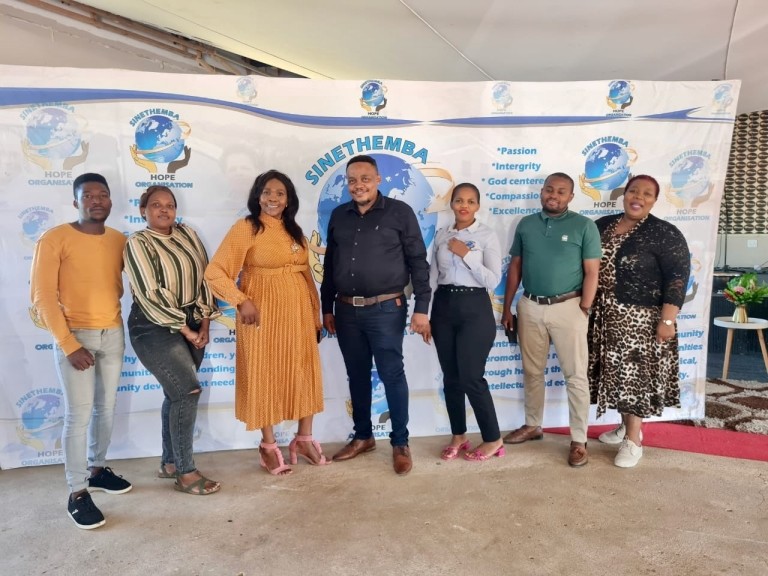Blog
Covid-19 in South Africa: Perceptions of the virus and vaccine readiness

Despite a strong national-level response to Covid-19 in South Africa, the country is facing a fifth wave, and nearly 95,000 Covid-related deaths have been reported since the start of the pandemic. In 2021, the South African government rolled out its Covid-19 vaccine program. However, as in other parts of the world, vaccine hesitancy has challenged uptake. Nearly a year later, roughly half of the population has been vaccinated – 43% of males and 57% of females over age 17. While cases are rising again, the focus must be on increasing vaccine uptake, including through communication messages to counter persistent misinformation and conspiracy theories that influence behavior. Lessons from the country’s response to HIV are useful, especially the effectiveness of community-based approaches that make the uptake of medical prevention methods more convenient and accepted.
To better understand the impact of Covid-19 on families and communities, as well as barriers to vaccination uptake, Pact worked with the Department of Social Development (DSD) to conduct a qualitative assessment, the findings of which will support ongoing vaccine rollout. The assessment looked at perceptions of Covid-19, the pandemic’s psychosocial impacts and knowledge of the vaccines, as well as potential barriers to and opportunities for vaccine uptake. The team spoke to social workers, community caregivers and recipients of social services living in Gauteng and Kwa-Zulu Natal provinces, with teleconferencing enabling outreach to respondents in rural communities.
Perceptions of Covid-19 and its psychosocial impacts
Findings show that community members are aware of Covid-19 and preventive measures. However, myths remain prevalent and contribute to resistance to prevention and vaccine uptake. Communities noted a lack of trusted information; respondents cited a lack of useful information from the Department of Health as a reason for turning to social media, despite acknowledgement that these sources are not always accurate.
Psychosocial impacts of the pandemic have included a range of effects resulting from the death of family or community members, with some respondents questioning whether vaccination may have caused deaths. The disruption of cultural practices such as mourning added to the emotional distress, as did stress from increased responsibilities on the part of survivors. Other negative impacts included difficulties caused by service delivery interruptions, especially in social service programs and at local clinics. Retrenchment also meant that households had financial strain due to loss of income, which in turn caused hardship when families faced food insecurity.
Perceptions of the Covid-19 vaccine
Communities have a high level of awareness about the Covid-19 vaccines, with about one-third of respondents expressing acceptance and appreciation that the vaccine would assist a return to normalcy. Slightly more respondents expressed potential acceptance than those expressing hesitancy, with more respondents in urban areas in the former group and rural areas in the latter. Some who had already been vaccinated stated that they did so due to vaccine mandates for work, school and transport. Participants also said that they took the vaccine after seeing their role models do so, or upon realizing the need for herd immunity. Those reporting resistance cited questions regarding vaccine safety, efficacy, alignment with cultural and religious beliefs and distrust of the government.
Information as critical for vaccine uptake
The assessment also identified opportunities to address vaccine hesitancy. The results show the need for credible information from reliable sources – government leaders and healthcare workers. Respondents also want encouragement from trusted sources such as friends, family and community leaders. Although respondents noted the untrustworthy information from social media, many acknowledge that this is the most-used information source, indicating a disconnect between the information that people have most available and the information they feel is reliable. A communication campaign that includes social media and involves community leaders and healthcare workers is needed. The government and its health development partners need to ensure equitable access to accurate, user-friendly information, including via the distribution of pamphlets and brochures, as TV and radio are less common as sources.
A focus on vaccine champions would also help by including trusted community leaders and religious leaders as advocates for Covid-19 vaccination. The champions should work with the government to address the challenges of government mistrust and reassure community members of the government’s good faith in addressing the pandemic.
By engaging social workers, community leaders and community members, Pact and the DSD gained insight into the limitations of vaccine rollout. Assessment results can enable the targeting of community members who may positively influence Covid-19 vaccine uptake by counteracting inaccurate information. The government should ensure, as much as possible, that social media platforms have correct information, and continued community engagement is needed to develop trust so that respondents can see that their opinions and ideas are taken seriously. There is also a need for community-based psychosocial support for social work practitioners to help communities in dealing with stress.
To aid the use of assessment results for increasing vaccine uptake, Pact has been working with South Africa’s DSD to raise awareness of the benefits of the Covid-19 vaccine among vulnerable households, particularly among caregivers of orphans and underprivileged youth. The DSD and Pact have partnered to serve this population for nearly a decade, and Pact is contributing to the DSD’s Risiha Programme to ensure the use of accurate information in this program’s case management of vulnerable households.